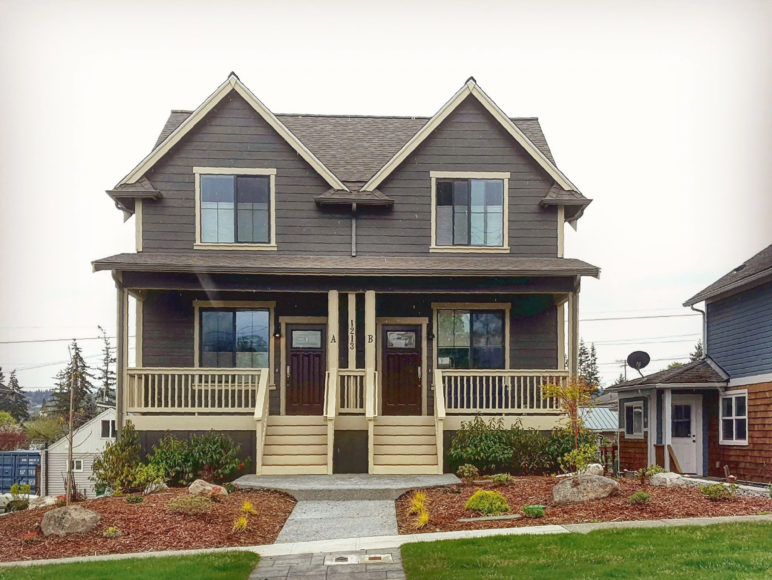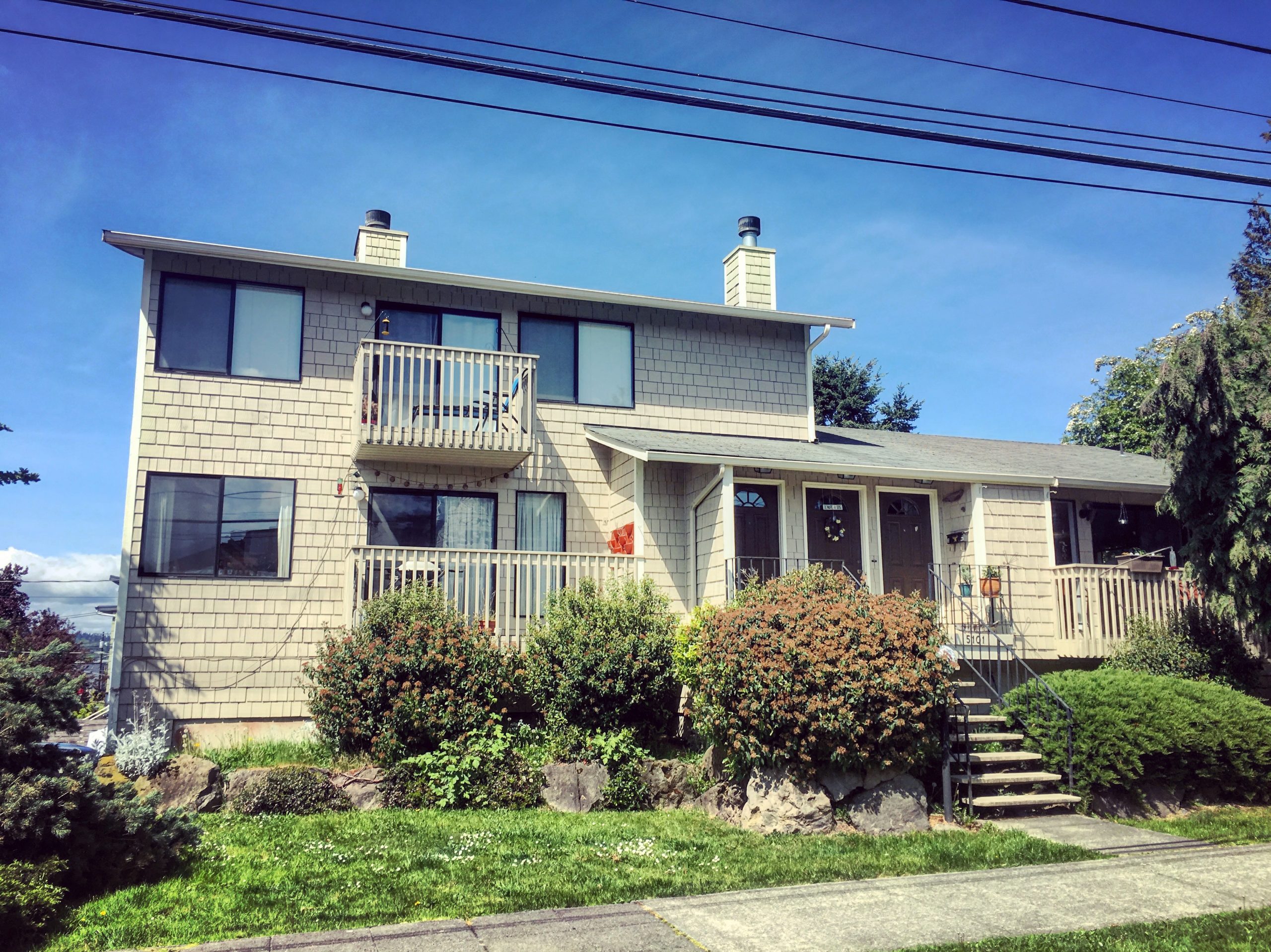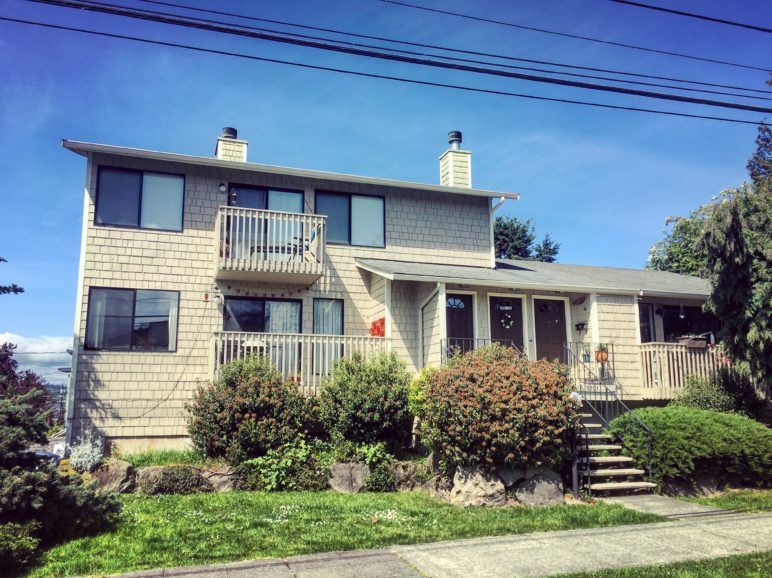UPDATE 2/19/20: WA’s middle housing bill is dead. The Senate version passed out of committee but never got a floor vote, while the House version failed to move out of committee.
Modest homes such as triplexes and townhouses are grandfathered into the mixed-income neighborhoods of every city throughout North America. But in most of those neighborhoods across most of those cities, they’re illegal now.
This year, Washington lawmakers can enable a return to those historic neighborhood roots and expand housing choices statewide.

These kinds of mid-size homes can help ease prices and give moderate-income, working families, and small households like seniors or young couples more affordable options. But during the last century, cities systematically outlawed all but the most expensive homes—stand-alone houses on large lots—in most of their residential neighborhoods.
This year, Washington lawmakers can enable a return to those historic neighborhood roots and expand housing choices statewide. Legislation introduced yesterday by state representative Nicole Macri (D-Seattle) and senator Mona Das (D-Kent) would lift local bans on small-scale, multiple-dwelling homes known as “middle housing.”
The proposed bill, HB 2780 and SB 6536, would re-legalize:
- triplexes on any lot, and up to sixplexes in single-detached house zones in counties and cities of 15,000 or more
- duplexes on any lot in all cities between 10,000 and 15,000
UPDATE 2/5/20: SB 6536 was amended such that the above two bullets should now read:
- up to sixplexes in single-detached house zones in counties and cities of 15,000 or more, on lots within 0.5 mile of a major transit stop
- duplexes in single-detached house zones in all cities between 10,000 and 15,000
It would only apply to the portions of cities and counties inside designated urban growth areas , which covers slightly more than three quarters of the state’s residents. (The Oregon legislature blazed a trail to state-wide housing abundance standards, passing this kind of legislation last year.)
Washington’s bill would reverse one-size-fits-all zoning laws that currently mandate a single house for just one household as the only legal option on must urban residential land. It would set state-wide standards for allowing a range of home types, and give local governments lots of control over how they want to do it, such as rules for building height and setbacks from property lines.
Re-legalizing middle housing increases choices—choices that help more people find homes they can afford in neighborhoods close to their jobs, and choices that curb sprawl and climate pollution. With this middle housing bill, Washington has a chance to set a national example for tackling a statewide housing crisis and our global climate emergency.
Why Washington needs to re-legalize middle housing
Choices about which home types are allowed and which are not shape our communities, especially by determining who can afford to live in them and who cannot. And in turn, where we live shapes our lives and our long-term success—from the length and cost of our commutes to where children go to school.
Ubiquitous bans on middle housing create invisible walls of exclusion around neighborhoods throughout the state, depriving families of opportunity. That is no accident. Starting in the 1920s, city leaders enacted zoning that permits only detached houses on large lots for the explicit purpose of keeping out poor people.
Re-legalizing middle housing statewide would not only give Washingtonians more affordable options, it would also create more opportunities to live close to jobs, schools, transit, parks, and shops. Today, huge swaths of these areas allow only pricey stand-alone houses, putting them out of reach to moderate-income families. Neighborhoods would gradually add a more diverse mix of homes affordable to those who would otherwise be priced out.

New construction duplex in Anacortes, WA. Photo by Anna Fahey, used with permission.
How middle housing helps affordability
Under status quo zoning laws that ban anything but detached houses, Washington’s growing cities are trending toward bigger and pricier “McMansions” and higher prices. Smaller, older houses are getting demolished and replaced with expensive, big ones. In contrast, allowing duplexes and fourplexes instead would help our communities grow more affordable to more residents.
First, compared to detached houses, homes in ‘plexes are usually smaller, and therefore cheaper. Second, when you can put multiple homes on a lot, the cost of the land gets split between multiple households, not just one. Third, more homes on less land helps cities meet the housing needs of more families—and that has the added benefit of relieving upward pressure on rents and prices.
Making more homes available can also reduce pressure to demolish older, less expensive homes. Portland estimated that their proposal to re-legalize fourplexes would reduce demolition-related displacement of low-income households from low-density zones by 28 percent citywide, essentially because the more homes you can put on a lot, the fewer lots it takes to accommodate population growth. However, in a few neighborhoods the city also projected “increases in redevelopment that could lead to the increased displacement of vulnerable households.” A holistic housing strategy calls for balancing policy reforms for abundance with anti-displacement measures, and some of the sponsors of Washington’s middle housing bill are aiming to do that this session, too.
How re-legalizing middle housing would cut climate pollution
Re-legalizing middle housing would help Washington meet its climate goals in two ways. First, compared with detached houses, middle housing types use less energy, mainly because they are smaller and the units conserve heat by sharing walls. On a typical urban block with 18 houses, replacing three of them with a duplex, triplex, and fourplex would cut the block’s total energy use by 20 percent.
Second, increasing the number of homes in established neighborhoods with good access to jobs and transit curbs sprawl and reduces reliance on cars, Washington’s biggest single source of climate pollution. A California study estimated that people living in suburban detached houses drive over twice as much as those living in an urban area with good transit.
Cities need state leadership on middle housing
Because Washington’s housing affordability crisis afflicts communities throughout the state and crosses municipal boundaries, successful solutions will be built on state standards that enforce accountability from all local governments.
Municipalities should have flexibility to tailor solutions to their communities. But without state guidelines, we get an inconsistent patchwork: local policymakers’ hands are tied because vocal minorities opposed to change usually drown out the voices of lower-income residents. Statewide reform establishes a level playing field and makes sure all cities work together and take responsibility for our shared affordability and climate goals.
By passing HB 2870/SB 6536 to re-legalize middle housing, state leaders can help undo the historic wrong of exclusionary zoning, make sure more Washingtonians can find homes they can afford in places that broaden their opportunities, and protect communities from sprawl and carbon-spewing mega-commutes by car.











RDPence
How can we assure that the resulting -plex housing would actually be “affordable”? Seattle has lots of examples of 4-paks and 6-paks where each unit is priced in very high six figures.
Dan Bertolet
We can assure that ‘plexes will be more affordable than a new single-detached house on the same lot. And we can also assure that allowing multiple homes on a lot instead of just one will help relieve the housing shortage and keep average prices lower than they otherwise would have been.
Furthermore, non-profit affordable developers almost always build multifamily housing, and it’s a big challenge for them to find land. This bill would remove what is essentially a ban on affordable housing on the majority of the residential land in most cities.
Jen Mechem
This is great news! I’d like to see the addition of requirements that cities not offer a fee-in-lieu option for affordable housing levies, and that ‘plexes offer at least one unit that’s physically accessible.